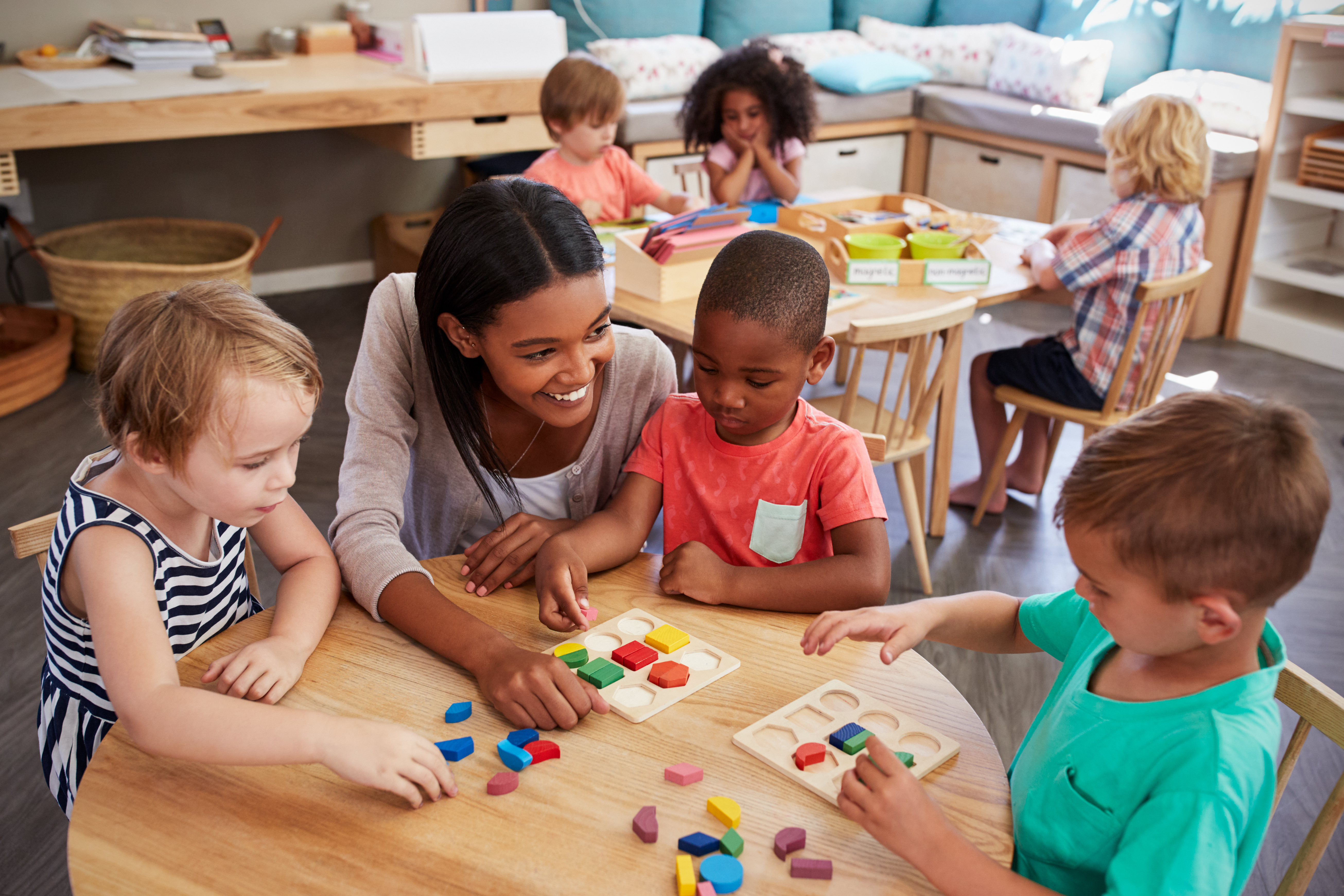Positive Teaching Promotes Positive Behavior
With the hustle and bustle of everyday life, teaching can feel like a marathon of managing schedules, juggling tasks, and addressing misbehavior. It can feel like there is little time to be the fun, caring, and attentive teacher you want to be, causing feelings of frustration, shame and guilt. Despite all your efforts, it can be easy to feel as though you have lost control of your classroom. If you have ever felt this way, you are not alone. Our team often works with our families and schools on these very same concerns, and we want you to know that it is possible to regain control and begin feeling more positively about yourself and your classroom. Here are a few tips to help you shift your focus and begin creating the positive school environment you want to have.
FOCUS ON THE POSITIVES
It can be all too easy to focus on the things your student is not doing right, but your student is so much more than their mistakes. Remind yourself of your student’s creativity. Think about how great of a leader she is by being so headstrong. Remember how kind and caring he can be. As teachers you want to ensure your students are learning right from wrong, but you can get caught in the trap of only responding to negative behaviors. By putting more attention and focus on the things your student does well, you can spend more time encouraging your student and in turn, creating a more positive environment.
» Build positivity into your daily routine by starting your student’s day with a positive affirmation.
» End each day thinking or writing one or two things you appreciate and respect about them.
The more you focus on your student’s strengths and abilities, you will find it easier to have patience with them as they figure things out on their own, and you can give yourself more grace in helping them along the way.
PRAISE, PRAISE, PRAISE
Many teachers feel drained by discipline. You want your student to enjoy the toys and experiences you’ve provided them, not take them away. While consequences are a necessary tool to teach responsibility, finding ways to reward positive behavior can be more effective and more enjoyable for you and your student. Praise is a great reward because it is something you always have to give. Praising your student makes them feel good and motivates them to seek your praise again. Genuine and specific praise tells your student exactly what behaviors you like and want to see more of.
» Thank your student for listening the first time.
» Tell him how proud you are that he cleaned up his center.
» Celebrate with her when she is able to utilize scissors correctly in the art center!
When children learn they can receive positive attention of good behavior, they have less motivation to seek out attention through negative behaviors.
RESPOND WITH FEELING
Children don’t have the same ability to communicate their feelings and needs the way adults do. Crying is a way of expressing sadness or fear. Tantrums are a way of expressing frustration, anger, or disappointment. But you can help your student build their vocabulary and learn to communicate their needs. You know your students better than most people- you know when they are sad, angry or tired, and by reflecting that to them you are teaching them how to talk about their feelings and letting them know you understand how they feel. You can respond with feeling any time during the day –
» When you notice how happy he is while playing with friends.
» Or how surprised she is when her blocks tumble to the ground.
Inevitably, there will be times when a rule is broken, your student doesn’t get their way, or a tantrum is thrown. Before attempting to solve a problem or address a concern, let your student know that you understand how they feel. By acknowledging your student’s feelings, you are letting them know that you care for them and understand them, both when they do what is right and when they make a mistake. The best teaching tool anyone can use is the one you already possess – your relationship with your student. Each of these skills serve to build upon the bond you naturally have with your student. By focusing on your relationship, you can create a positive school environment where you feel more in control and better equipped to handle whatever is thrown your way. The more you build upon these positive teaching skills, you will find that many of the negative behaviors you are concerned about will correct themselves on their own. When a child feels empowered to focus on their own strengths, is
rewarded for positive behaviors, receives consistent attention, and knows their teacher understands their own experiences, they have less reason to act out or misbehave. Most importantly, when you are able to spend less time correcting, redirecting, and addressing problems, you will find that you have more time to do the things you love most as a teacher – having fun together, encouraging learning, and watching your students grow. If you would like additional support in learning more positive teaching skills, consider seeking help from
a trusted therapist. Carolina Pediatric Therapy has a team of experienced and qualified behavioral health therapists ready to work with you and the families you serve.
ARI BROWN, LCMHC is a Licensed Clinical Mental Health Counselor with Carolina Pediatric Therapy.
She is part of an interprofessional collaborative team including behavioral health, occupational therapists, physical therapists, speech-language pathologists, and psychologists dedicated to supporting and promoting children’s development and well being.
Adapted from Triple P Positive Parenting Skills and Child Parent Relationship Therapy skills developed by Garry Landreth and Sue Bratton
Want to know how a Therapist can Help?
Call (828) 398 0043 or click on the schedule button.




